Jaeger-LeCoultre Reverso Tribute to Rembrandt
Jaeger-LeCoultre is showcasing its impressive micro-painting and enamelling skills.
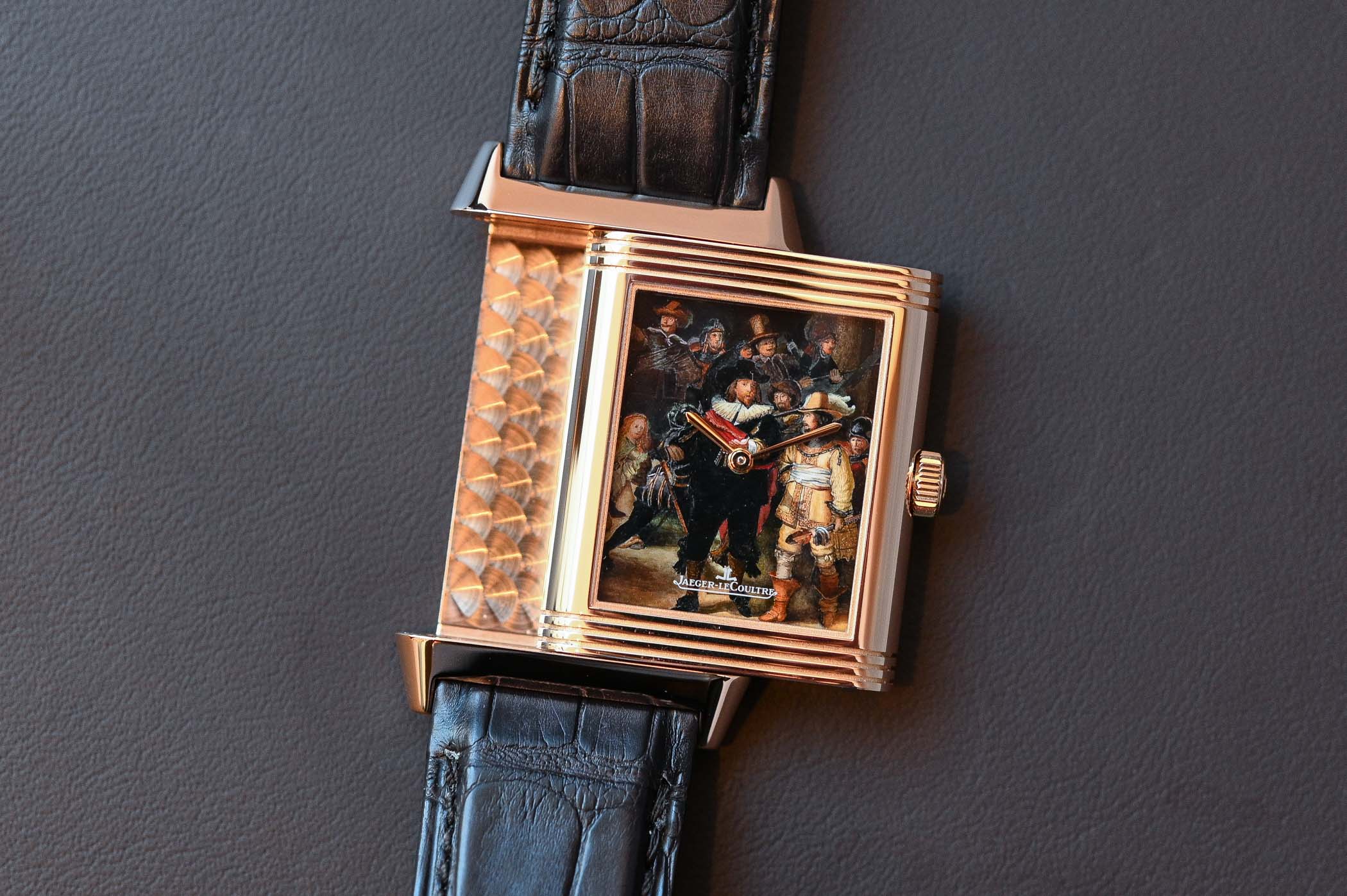
When introduced back in 1931, the Reverso was designed with one purpose in mind: protecting its dial. It was a watch made for polo players, who needed to have the glass of their watches (at that time still mineral glass) hidden – hence the idea of a reversible case. Since then, such needs aren’t relevant anymore but the Reverso still plays with its hidden surfaces to display artistic adornments. After the Reverso Tribute to Piet Mondrian, another (major) Dutch artist is on display today with the Jaeger-LeCoultre Reverso Tribute to Rembrandt – and with a stunning execution…
Since the initial purpose of the Reverso isn’t relevant anymore, Jaeger-LeCoultre had a good idea to devote some of the hidden surfaces of the Reverso case to artistic crafts. There’s, of course, the typical engraving done on the caseback, with initials, an image of your choice or anything that will remind you of the reason why you bought this watch. There are some even more fascinating ways to adorn the case of a Reverso, thanks to the talent of JLC’s Atelier Métiers Rares®.
Jaeger-LeCoultre has repeatedly devoted its many crafts to paying homage to artists on the Reverso, one of the rare watches perfectly suited to showcasing a reproduction of a work of art on the dial or on the caseback. We’ve already shown you various examples here, on MONOCHROME, with different ways to express these artistic skills. First was the Reverso à Eclipse Van Gogh Sunflowers, with a micro-painting discretely hidden, or shown, by choice of the wearer thanks to shutters. Another watch of this kind was the Reverso Tribute to Piet Mondrian, with an enamelled painting on its caseback. Following the Dutch vibe, today we’ll show you the Jaeger-LeCoultre Reverso Tribute to Rembrandt and its ultra-detailed, hand-painted dial.
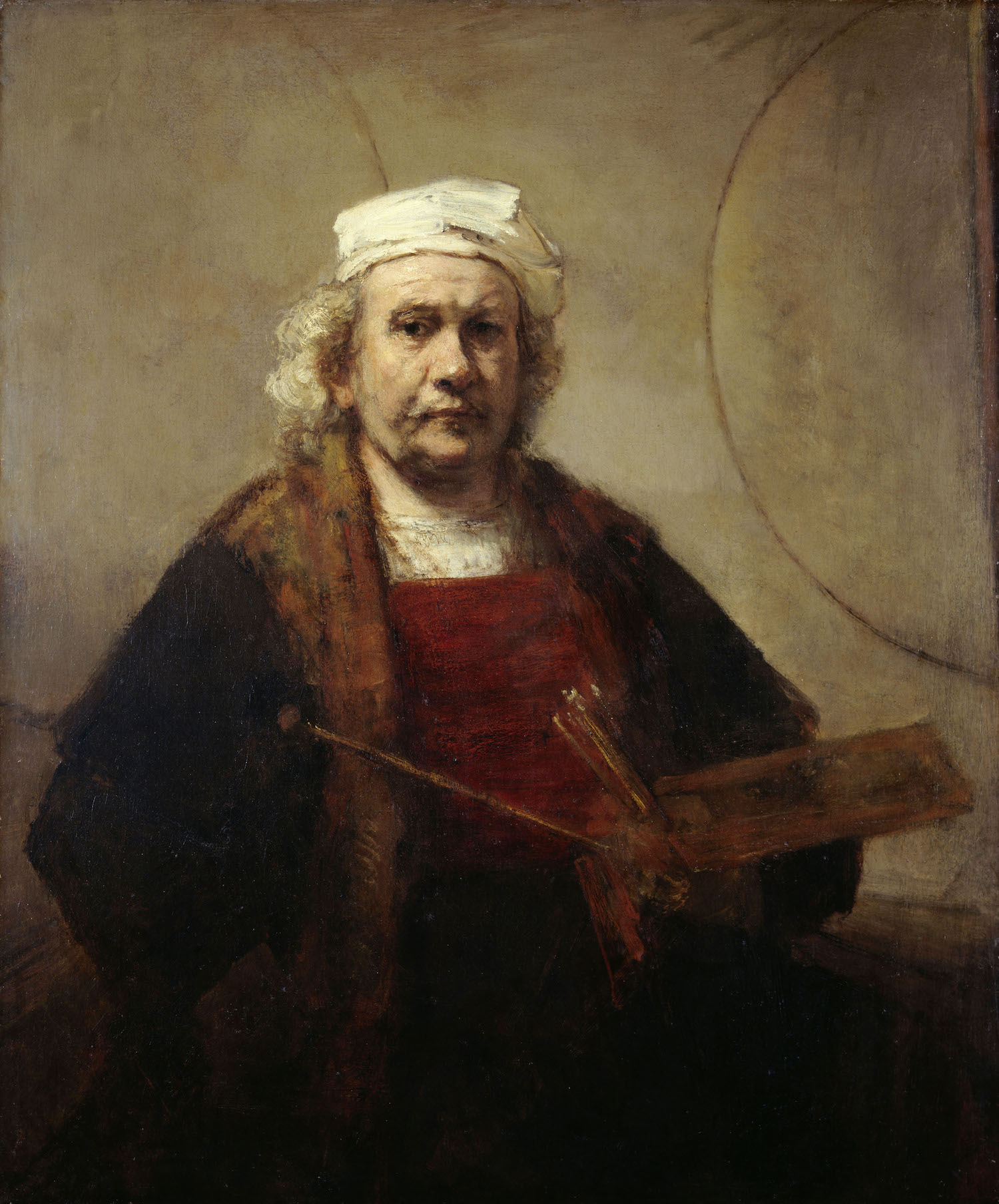
This year, throughout the Netherlands, the 350th anniversary of Rembrandt’s death in 2019 is celebrated with the “Year of Rembrandt” – a year packed with exhibitions and special events celebrating the work of one of the world’s greatest artists. Rembrandt (1606-1669, full name: Rembrandt Harmenszoon van Rijn), if ever he needs to be presented again, was one of the most influential and most important Dutch artists (a draughtsman, painter, and printmaker). His contributions to art came in a period of great wealth and cultural achievement that historians call the Dutch Golden Age when Dutch art (especially Dutch painting) was extremely prolific and innovative. He is generally considered one of the greatest visual artists in the history of art and the most important in Dutch art history.
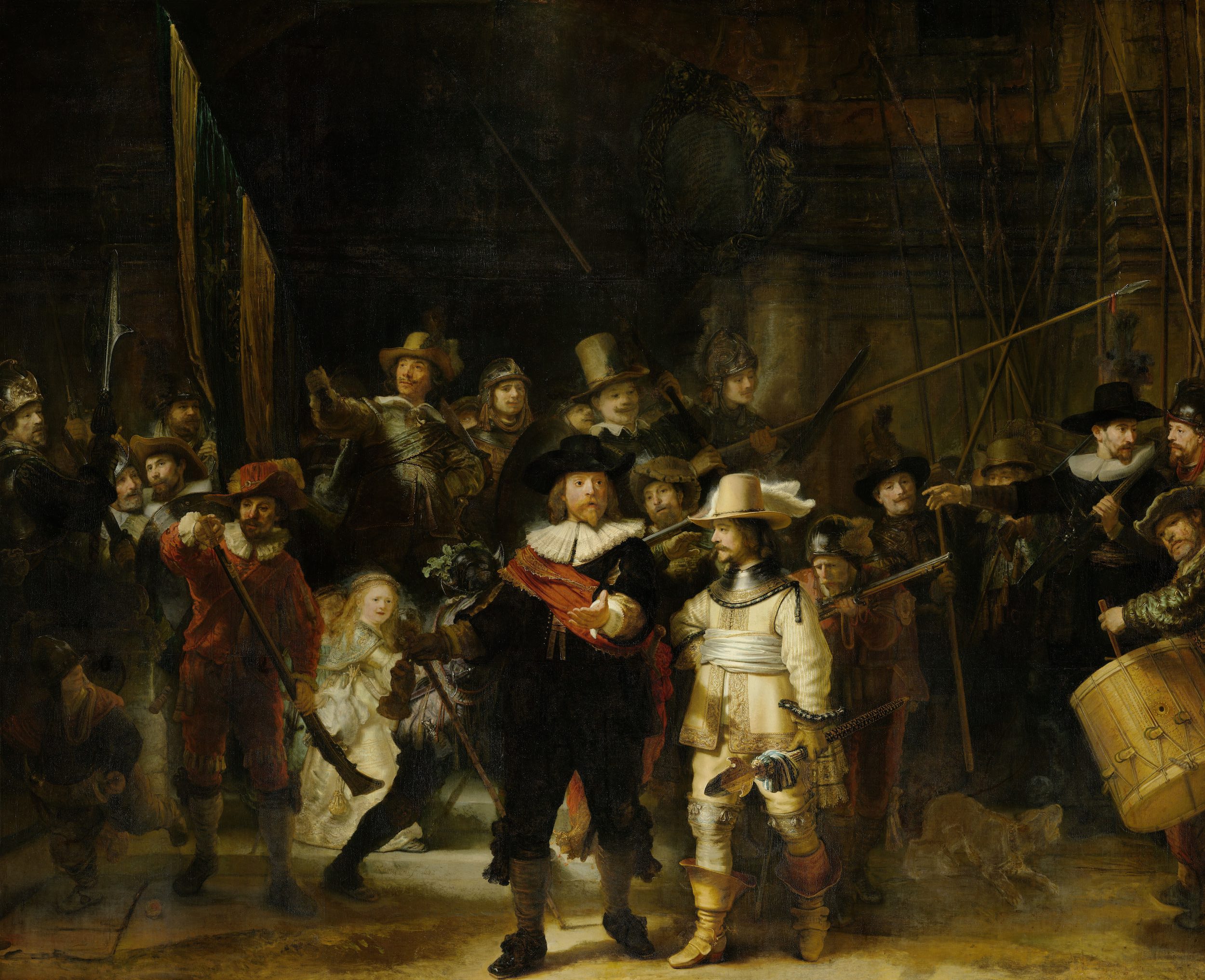
Among the multiple art-pieces created by Rembrandt, one of the most important and most notable is “The Night Watch” (1642, with full name “Militia Company of District II under the Command of Captain Frans Banninck Cocq” or in Dutch “De Nachtwacht”), a massive 363cm × 437cm painting depicting a static military group portrait, with dramatic use of light and shadow. This painting is now exposed at the Rijksmuseum, the Netherlands’ national museum in Amsterdam.
As a tribute to Rembrandt, Jaeger-LeCoultre, in association with GASSAN (Dutch retailer that runs the JLC Boutique), has created a Reverso watch with part of this very painting on its dial… But don’t think it is just a print version of “The Night Watch” that will be brought to you. In fact, we’re talking about something very impressive.
The painting has been reproduced on this Jaeger-LeCoultre Reverso Tribute to Rembrandt thanks to micro-painting and enamelling techniques. Jaeger-LeCoultre is one of the few manufactures to still have such expertise in-house, thanks to its the Atelier Métiers Rares® (Rare Handcrafts), a special department that can operate enamelling, hand-engraving, guillochage, and gem-setting.
For this Reverso, micro-painting with enamel has been used. However, this isn’t an easy task. Much of the complexity lies in working by hand to scale the original painting – measuring over 3 metres high and 4 metres wide – onto a surface of only a few square centimetres, during the very process of enamelling. The painting is applied by hand by skilled craftsmen who paint the dial with thin brushes and enamel powders. The layers of enamel are consecutively heated between applications, altering the painting’s colour intensity gradually. Each step is at risk, as a single piece of dust or a crack would mean starting again from scratch.
The result is a dial that not only looks like the original but with an impressive level of details – keep in mind that the dial measures less than 3cm x 2cm. Colours, especially the use of shadows and bright areas, and details are faithful and a look through the loupe (or thanks to these macro shots) reveal multiple details – imagine the complexity to paint the hands or the faces…
The Jaeger-LeCoultre Reverso Tribute to Rembrandt is presented in a classic Grande Reverso model in 18k rose gold with a black alligator strap. The case measures 48.5mm x 30mm, with a 10.24mm height. Inside the case is the hand-wound calibre 822, an in-house movement usually found in such Reverso pieces.
The Jaeger-LeCoultre Reverso Tribute to Rembrandt (ref. JLQ37325EN) will be produced in 5 pieces, only available from GASSAN. Price on request. More details at www.jaeger-lecoultre.com.

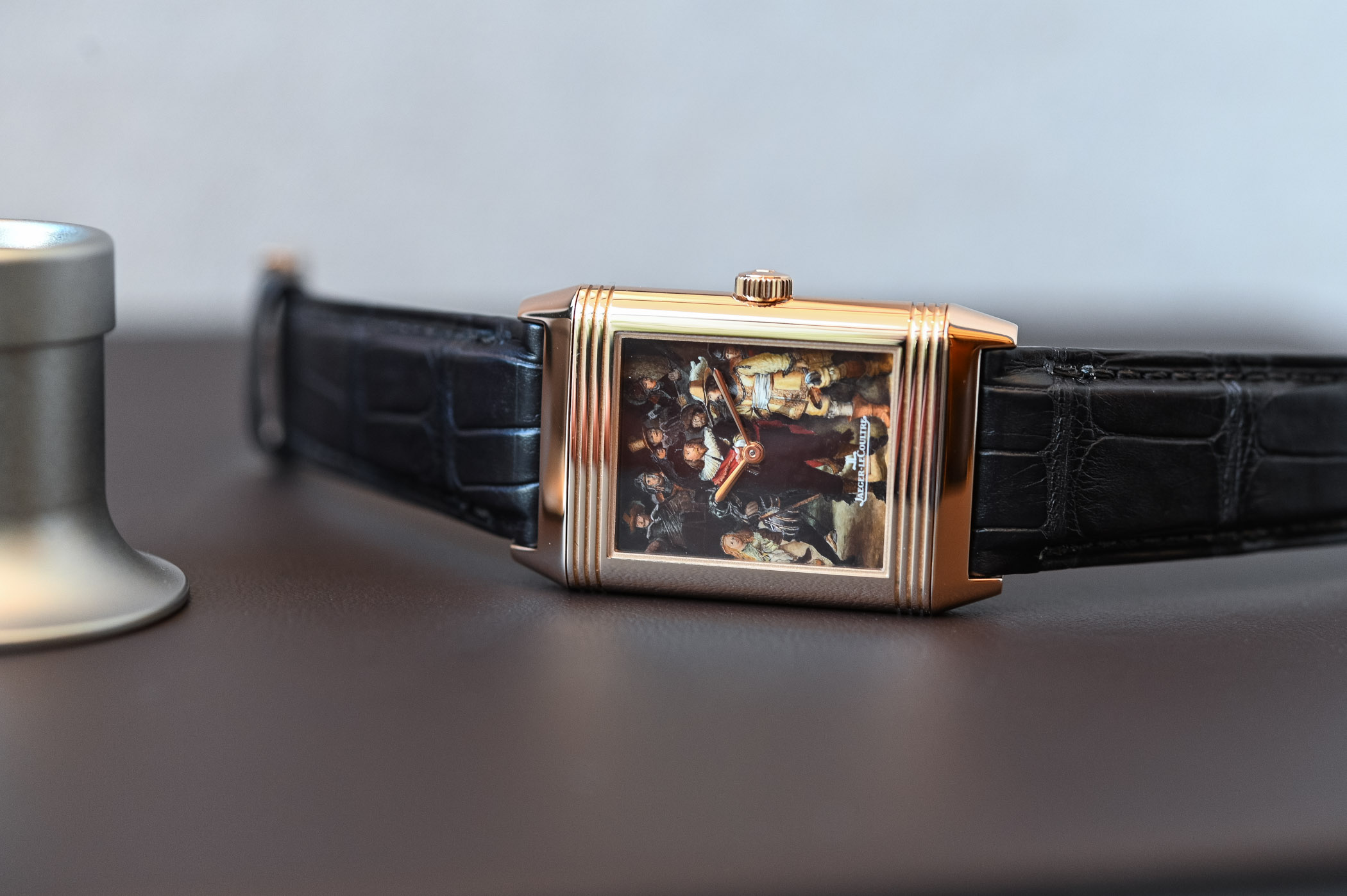
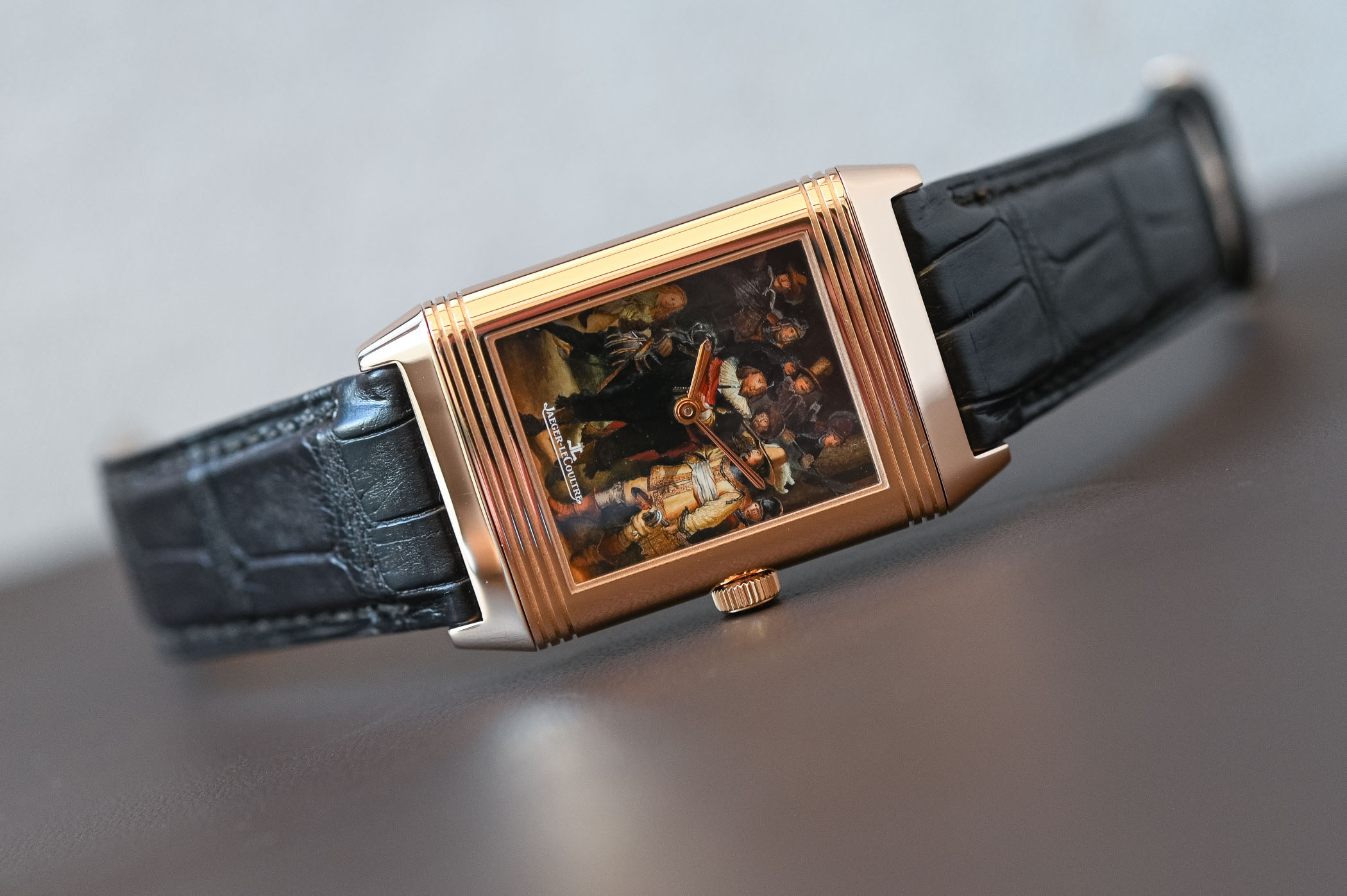
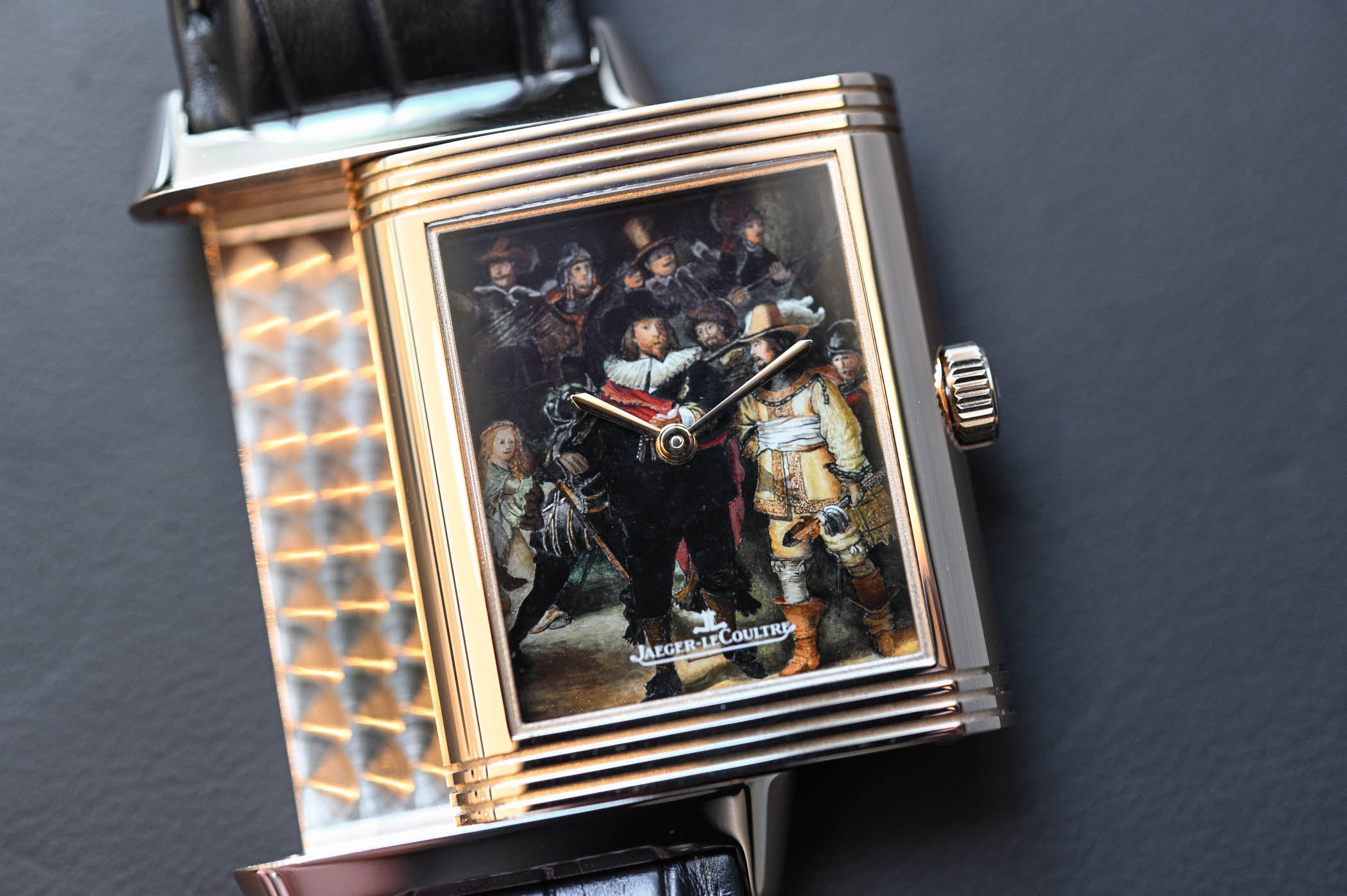
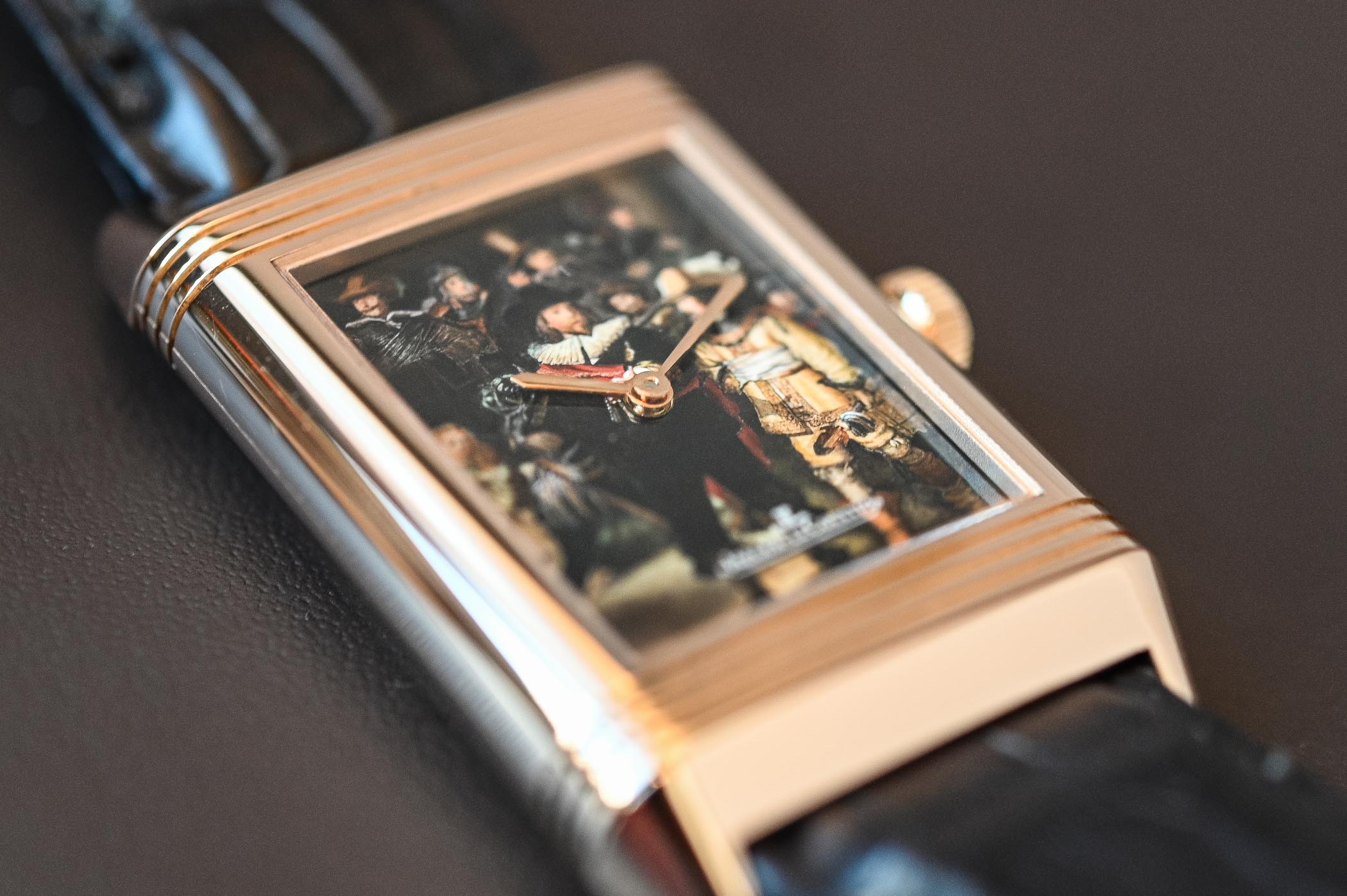
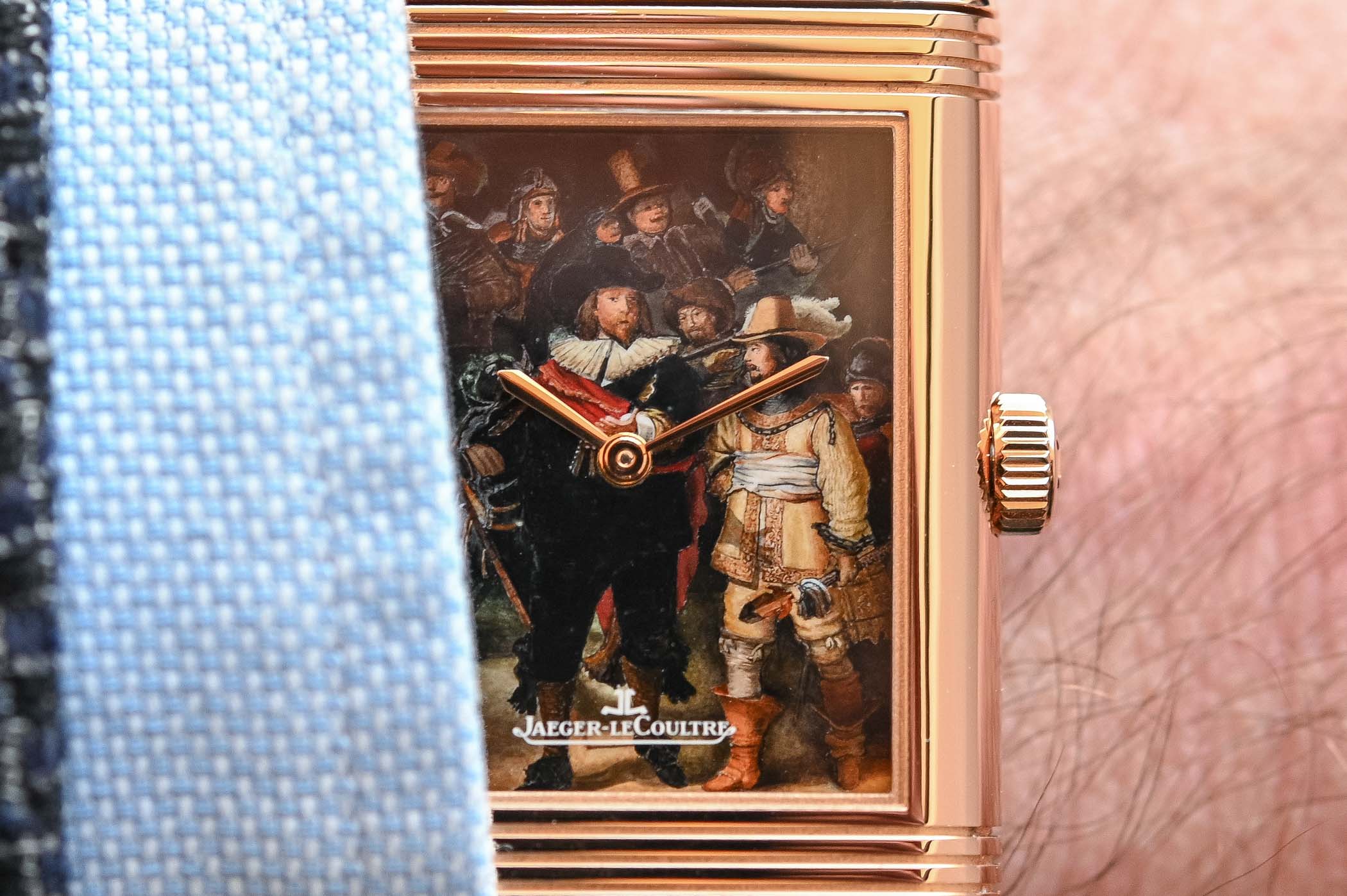
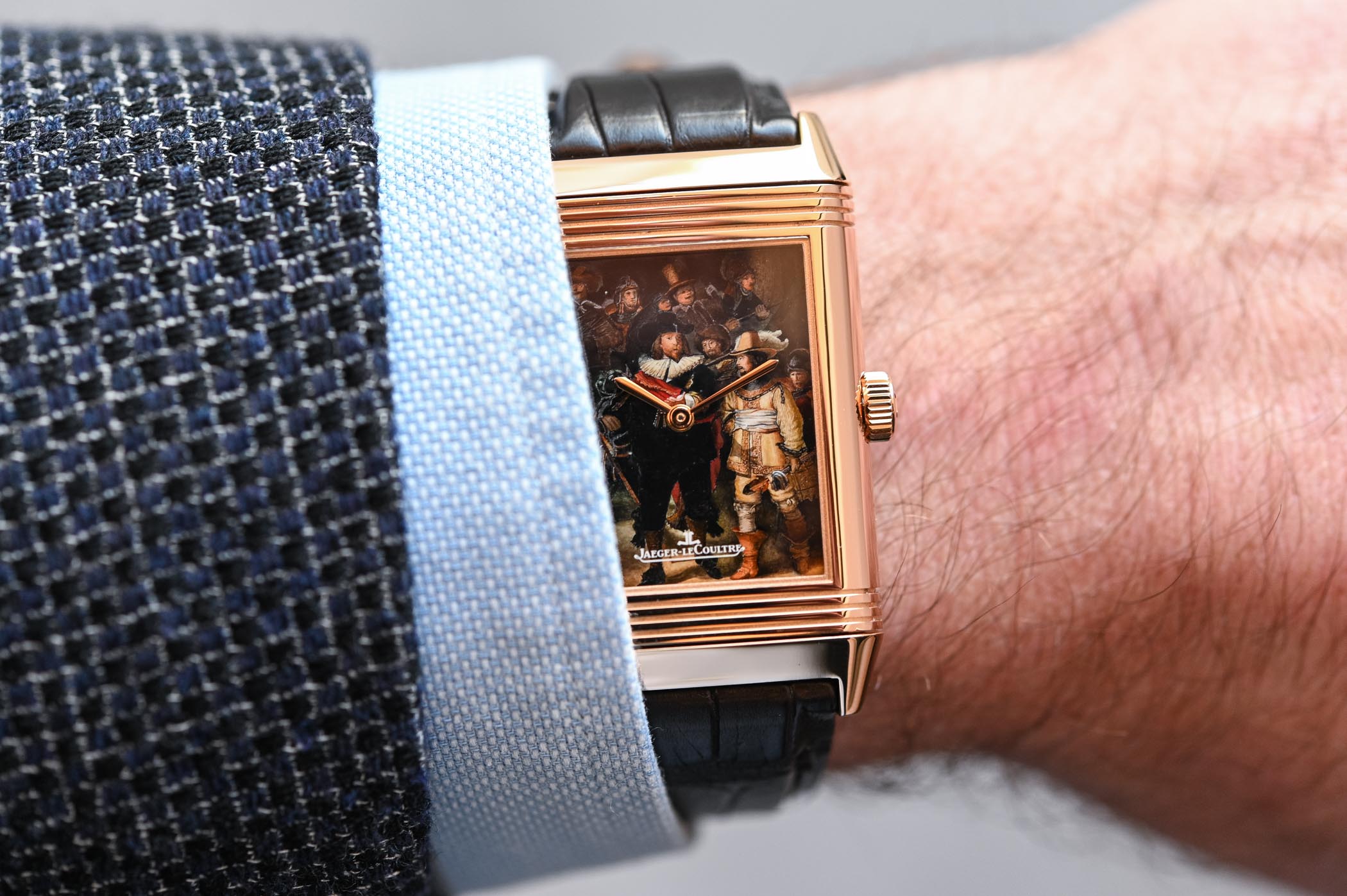



4 responses
Rembrandt is one of my favourite painters, along with Caravaggio and Zurbaran, but this…doesn’t quite work for me. I think it may be that the painting (or part of it) doesn’t lend itself as well to miniaturisation – unlike the Eclipse Sunflowers which is one of the most delightful examples of dial handcrafting I’ve seen.
Anyway, I can’t afford it so it doesn’t matter what I reckon. Love Reversos in general, though.
I recently bought a plastic watch on ebay, it had a picture of a carabinieri on it. Kept the 2824-2 movement and hands for a project, threw the rest away. Don’t think this would be cost effective though.
I think the art does work here, although at this level of miniaturization I would have to see it in person in order to judge. I am a bit incredulous about how this is “hand painted with enamels” and feel the JL logo too attention seeking in white. Perhaps matte black would be less distracting. This watch looks particularly good with pink gold, (which for me) is a rare achievement.
I think this ruins an icon of watch-making.